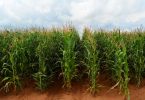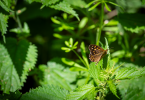Shadrack Mulea*, Nguta Charlesb and Kamau Geoffreyc
| This study aimed at finding the presence and levels of banned/or restricted halogenated and nonhalogenated hydrocarbons suspected to be present in wetland ecosystems of Lake Victoria Basin. Water samples were collected from three river systems traversing Kigwal/Kimondi, Nyando and Nzoia wetland ecosystems and were analyzed for the presence of banned/or restricted halogenated and non-halogenated hydrocarbons using Gas Chromatography Mass Spectrophotometer. The presence of several banned/restricted persistent organic pesticides (POPs) which included Benzene Hexachloride (BHC), total DDT, DDD, DDE, and Dieldrin in water was established. At least one of the detected pesticides was found in every sample collected, at concentrations ranging from 0.1 to 300 mg/L. This is an indication that there is continual use of banned or restricted POPs in Lake Victoria Basin in Kenya. It is recommended that a study be conducted to ascertain the major sources of the detected An investigation on how the banned/restricted halogenated hydrocarbons enter into the Kenyan market to be used by the farmers should be carried out by the Government as an effort to protect the environmental health of the region. |








This is a great post!